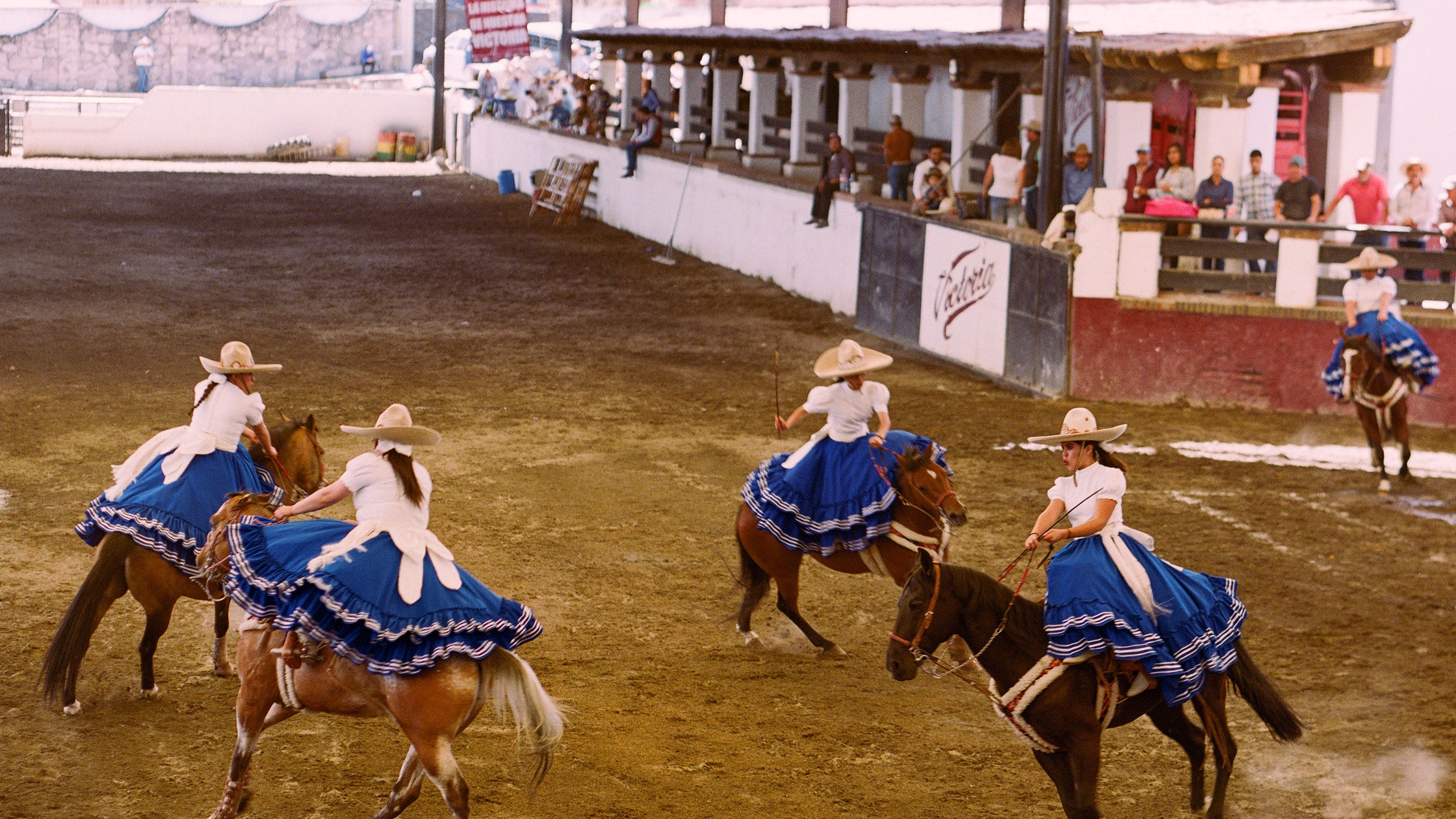Exploring the World of Mexican Escaramuzas
Female rodeo riders in Mexico, known as ‘escaramuzas,’ perform highly choreographed equestrian dances, with many from families often choosing to do business and marry among themselves. One writer takes a look inside their fascinating world.
Hooves paw the paddock nervously, releasing dust clouds that drift lazily through the Mexican sunshine. A crowd sporting their best sombreros and agave-fibre lassoes files into the stadium, and their excitement is palpable: they know they’re about to witness stunts that are as slick as they are dangerous. Manes are given a final brush until they shine like silk, and riders sit sidesaddle with as much ease as if they were in their favorite chair. The team’s captain, La Prieta, watches calmly, ensuring each horse is as primed as a Vogue cover star, offering words of encouragement to the younger riders. Although this scene could unfold in any charro club (Mexico’s answer to rodeo culture), there is a crucial difference. The Las Alteñitas team is composed entirely of women – or escaramuzas as the female charros are known – dressed in floor-length dresses inspired by designs from the 19th century.
In Guadalajara, Mexico’s second-largest city nestled in the epic highlands of Jalisco, the 50th anniversary of Las Alteñitas is being celebrated. This club is one of the oldest escaramuza teams in Mexico and is indisputably one of the best, holding five national championships and six second places under their silk sashes. True to charro style, they’re celebrating with a weekend-long tournament that draws together the 17 highest-ranking teams in Mexico, featuring fiestas that last until dawn.
As I settle in the bleachers, the surrounding families seem amazed to find a traveler among them. They leap up to pump my hand and offer chunks of fruit topped with chili salt. The escaramuza world is both exclusive – each dress costs around £220 and riders need at least two horses – and clannish, with families often choosing to do business and marry among themselves.
The teams, often including children as young as four, canter into the ring accompanied by the sounds of a symphony orchestra, forming elaborate shapes like beads in a kaleidoscope. Once they’re in position, Ana Maria Zermeño Barba, better known as La Prieta, rides out on an imposing chestnut horse. Sombreros are doffed, and petticoats rustle as the crowd rises to its feet; even the judge briefly puts down her cigar so her bejeweled hands can meet in rapturous applause. At the age of 70, La Prieta not only is the oldest woman riding (alongside her daughter and granddaughter) but was also one of the first ever escaramuzas and founded Las Alteñitas.




